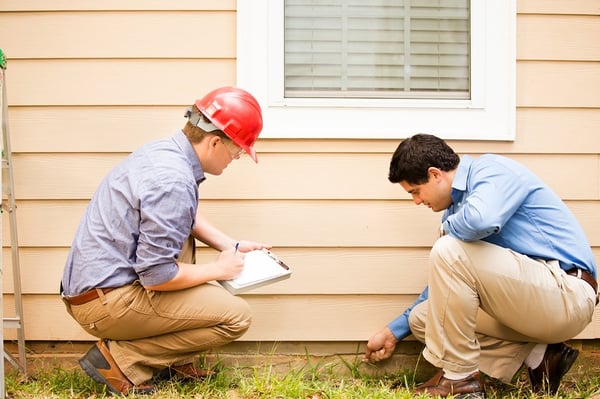Purchasing a new home can be stressful and exciting all at the same time.
In addition to choosing your dream home that suits your budget and lifestyle, you have to be sure it's in good structural condition and harbors no hazards.
One of those hazards that many people don't know about is high levels of radon gas.
You can't see it, smell it, or taste it, but radon gas is the second leading cause of lung cancer right behind cigarette smoking.
However, having radon in your dream home doesn't have to be a deal-breaker.
In the article below, we will discuss radon gas in-depth and what you need to know about it before you buy your new home.
Table of Contents
- What Is Radon?
- Radon Is Fixable
- Being Cheap Can Be Expensive
- What Is A Passing Or Failing Test?
- Contact Radon Eliminator
What Is Radon
Radon gas is a byproduct of the underground decay of radioactive elements like uranium and thorium.
As these substances deteriorate, radon is released and works its way to the surface of the ground, and then into the air we breathe.
Outdoors, radon gas is so diluted that it doesn't pose a health risk. When it gets trapped in buildings, however, it can become concentrated.
While radon is harmless in the low levels found outdoors, it can seep into a home and become concentrated at levels high enough to put residents at risk.
Radon gas is measured in picocuries per liter (pCi/L), and the EPA considers all homes with radon gas levels of 4 pCi/L or higher a risk to the inhabitants.
Radon gas is slightly heavier than air, so while it settles in basements and crawl spaces, HVAC systems have a tendency to distribute the gas throughout the entire home.
That means every level of your house could potentially contain high levels of radon.
Your human family is not the only one at risk for lung cancer from radon? For more information, read our blog post: "How Dangerous is Radon for Your Pets?"

Radon Is Fixable
Luckily, If the home you're buying does test high for radon gas, it should not deter you from purchasing the home.
Elevated radon gas levels can be fixed by installing a proper radon mitigation system. Radon mitigation systems are recommended in homes with levels of 4.0pCi/L or above or higher.
Even homes with radon levels as high as 80-100pCi/L can be brought below 4.0pCi/L with a high-quality radon mitigation system.
Typical retest results for residential homes fall below 2.0 and many coming even below 1.0 after having a mitigation system installed.
There are many different factors to consider when deciding whether or not to buy a particular home, and many of them can be deal-breakers.
However, due to proven removal techniques, radon gas shouldn't be one of them.
Being Cheap Can Be Expensive
If you're not involved in the process of installing a radon mitigation system in a home you are buying, it can end up being very costly for you.
If you leave it up to the sellers of the home, they could choose the cheapest option to get it done and get the closing over with.
A quality radon mitigation system installed by a certified and experienced contractor should cost anywhere between $800 and $1500.
If you are quoted a price below that, you may be getting a low-quality system.
Radon mitigation systems that aren't appropriately installed or installed without proper permits can cost you a lot down the road.
The costs that you can incur after a poor installation include but are not limited to:
- fines from the city
- service call costs to fix unsatisfactory work
- time wasted by trying to contact the company for service
- the cost of having the system removed and an entirely new system installed to get it to code or working as it should.
Check reviews as well as company history on the mitigation company before making a decision.
If you are going to have mitigation done at your new home, make sure it's done right the first time.
What Is A Passing Or Failing Test?
When you think of a test, you probably think of either passing or failing.
However, pass/fail should not be used to determine radon safety.
No level of radon in your home is truly safe. We've already established that a radon level of 4.0 picocuries per liter is the action level for radon gas in homes. That means you should take action to reduce radon levels that are greater than four picocuries per liter.
But you should also consider taking action if radon levels are between 2-4. Keep in mind that radon danger follows a linear curve of the amount vs. the time exposed to it.
Plus, there's the additional factor that each individual may be more or less susceptible to radon-related cancer.
The World Health Organization actually takes the action level a step lower by recommending that you fix radon levels greater than 2.7 pCi/L.
So even if you hear the word radon test "passed," you should still be cautious.
The test result may have been 3.9 pCi/L, which is barely under the EPA action level and significantly above the WHO action level.

Contact Radon Eliminator
If you are looking to purchase a home with elevated levels of radon, you need to contact an experienced mitigation company.
Radon Eliminator is rapidly becoming one of the largest and most respected Radon Mitigation Service Providers in the State of Ohio.
They have an experienced team of professionally certified Radon Mitigation Specialists.
They use state of the art radon testing and removal equipment to serve each one of their customer's unique challenges.
If your dream home has a radon problem, Radon Eliminator will fix it.
Click the button below to contact them today.





